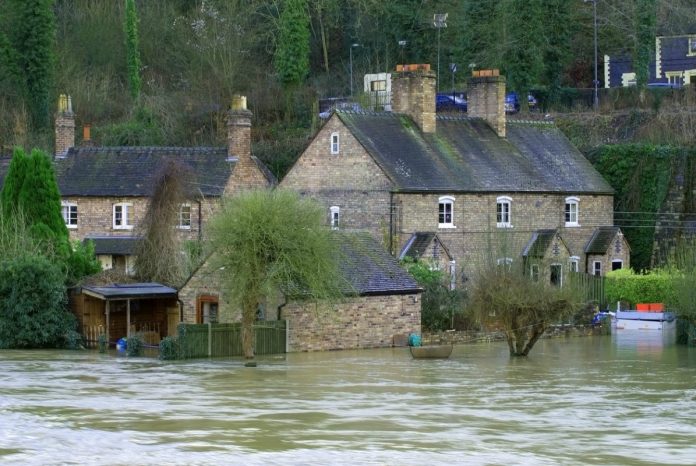Steve Hodgson, Chief Executive of the Property Care Association, talks to PBC Today about the PCA Flood Protection Group and the growing importance of improving flood resilience in properties
The UK’s wet and cold weather pattern this summer, coupled with images from across the Atlantic featuring Tropical Storm Harvey in Texas, have done little to quell the nation’s concerns about the threats of flooding.
Developing ways to help householders feel confident in homes that are at risk of flood damage is not just satisfying an emotional need; they represent a significant economic and environmental advance too.
For a number of years, national trade body the Property Care Association (PCA) has been leading the way in tackling flooding in buildings through its Flood Protection Group, including investigating ways to ensure water-damaged properties can be promptly returned to their former condition.
It is an area that is gaining much wider recognition across the property and construction industry, including the planning and building control sector.
A united front
The subject was on the radar this year at the association’s annual conference held at the University of Warwick in May, evoking strong interest among delegates from a range of property and construction-related backgrounds.
Jessica Lamond from the Centre for Floods & Communities led the discussion, giving an insight into effective measures and the importance of good practice in the delivery of flood protection.
Steve Hodgson, PCA Chief Executive, said: “The whole subject united all the delegates at the conference from across a wide range of professions towards a common theme, namely that flood resilience needs to be given much more of a priority in the UK.”
Effective measures
Flood resilience relates to any measures that reduce the time between the point the building is flooded and the point when the occupant can get back to the enjoyment of their property.
The PCA Flood Protection Group advocates a range of measures to improve flood resilience in properties. These include replacing standard absorbent wall finishes that break down when wet with materials and installation techniques that dry without damage or can be replaced quickly and inexpensively.
Recovery works can be speeded up through moving all services, such as boilers and electrical sockets, high up on the wall. Also, kitchens that use materials such as marine ply or steel can be cleaned, dried and reused.
The fitting of a membrane to walls and floors, so flood water can run behind it to be collected in a sump/pump unit, rather than entering the property, is another effective measure.
“Measures that can be adopted in modern buildings or during the recovery or refurbishment of older buildings in order to provide degrees of resilience and protection from the effects of flood water are numerous,” Hodgson said.
“Some are simple, some are more complex.”
Training for the future
To meet the need for a greater understanding of flood resilience, the PCA has developed a training course designed specifically for property professionals wanting to broaden their knowledge.
Property Flood Resilience Training for Surveyors is ideal for anyone who wants to understand the processes involved in the assessment of flood risk and the delivery of resistance and resilience measures in the built environment.
Although primarily targeted at surveyors, the course is also suitable for planning and building control professionals wanting to gain an insight into a subject that is only going to increase in relevance over the years.
“This training course is for anyone who wants to deepen their understanding and awareness of the elements and processes involved in the assessment of flood risk and the delivery of flood resistance and resilience in the built environment,” Hodgson said.
“It aims to deliver a thorough understanding of the property flood resilience survey process and address all the key elements that need to be considered to assess the risk of flooding and the development of strategies to provide protection in buildings.
“Managing flood risk is far from simply identifying which products can be fitted where. It’s more about assessing and evaluating every element.
“It’s therefore vital to assess and understand every individual scenario and this training will ensure the most appropriate strategies can be recommended to suit each homeowner, their property, their particular flood risk and their lifestyle.
“The importance of liaising with homeowners, delivering on their needs and managing expectations are also essential elements of the training.
“Ultimately, those taking part will gain the skills to ensure the recommended flood protection strategies are appropriate to an individual’s needs, as well as being appropriate for the property and the flood risk.”
The training is broken into four interactive tutorial sessions over two days. At the end of each session, individual and group tasks that incorporate practical exercises and problem-solving are undertaken.
This activity enables candidates to apply their new knowledge to real world scenarios, deepen their understanding of the topics and share their ideas with their fellow participants.
More details about the training are available here.
Trusted expertise
While flood resilience measures can make a positive impact, it is important to recognise that there’s no off-the-shelf solution.
The introduction of effective measures involves looking at a property as a whole, understanding its needs and bringing together a solution that will work.
This requires a high level of technical ability, requiring a professional who can adapt existing technologies and practices to deliver robust and reliable protection for homes and businesses at high risk.
Members of the PCA’s Flood Protection Group can help here. They understand the subject of flooding and can provide expert advice and guidance on how to reduce the risk of problems.
An example of this approach is shown in a PCA video demonstrating the impact of flood resilience work, which is available to view here.
The film reveals how homeowners affected by catastrophic flooding in 2007 called on PCA member expertise to ensure there was no repeat of the problem.
Steve Hodgson
Chief Executive
Property Care Association (PCA)
Tel: +44 (0)844 375 4301
Twitter @PCAPropertyCare

















